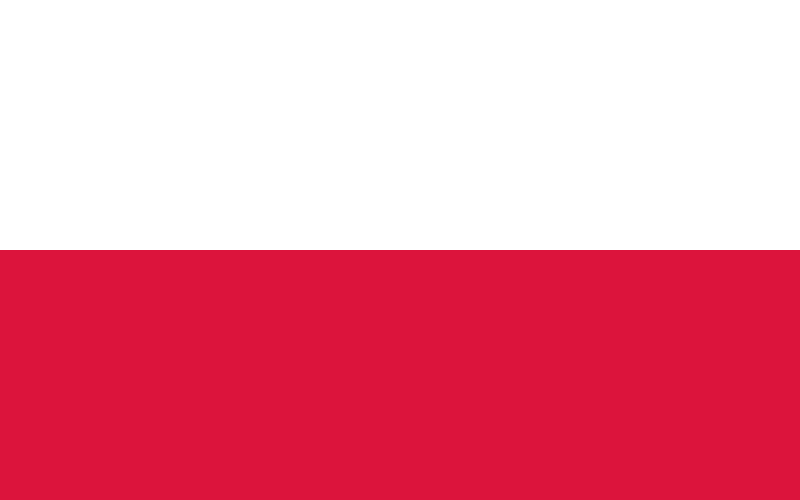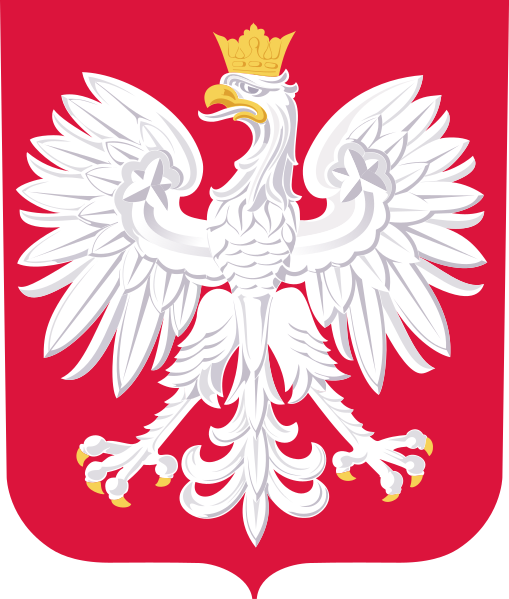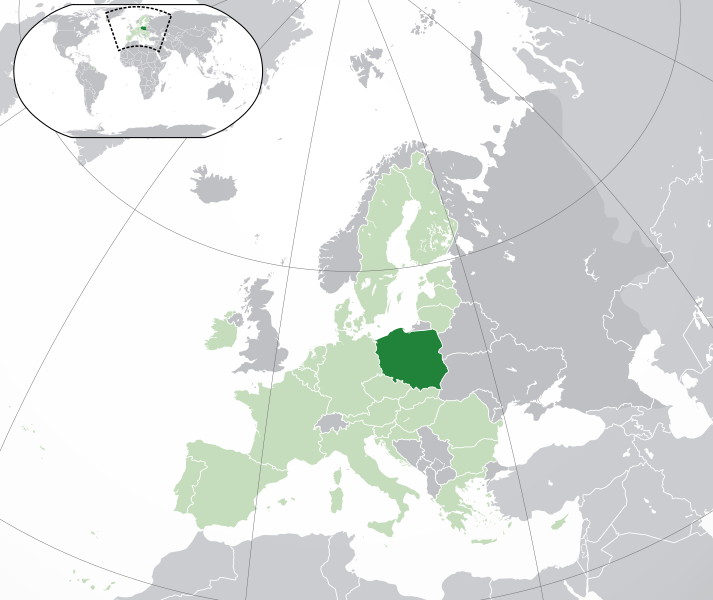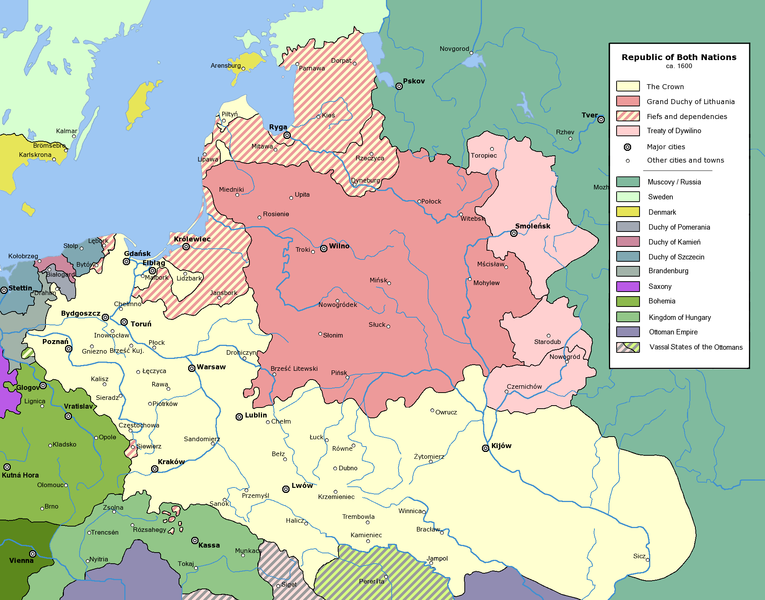|
|
Poland
Feb 27, 2011 20:38:41 GMT 1
Post by Bonobo on Feb 27, 2011 20:38:41 GMT 1
en.wikipedia.org/wiki/Poland
Poland (Listeni /ˈpoʊlənd/; Polish: Polska), officially the Republic of Poland (Polish: Rzeczpospolita Polska; Kashubian: Pòlskô Repùblika; Silesian: Polsko Republika), is a country in Central Europe[5][6] bordered by Germany to the west; the Czech Republic and Slovakia to the south; Ukraine, Belarus and Lithuania to the east; and the Baltic Sea and Kaliningrad Oblast, a Russian exclave, to the north. The total area of Poland is 312,679 square kilometres (120,726 sq mi),[2] making it the 69th largest country in the world and the 9th largest in Europe. Poland has a population of over 38 million people,[2] which makes it the 34th most populous country in the world[7] and the sixth most populous member of the European Union, being its most populous post-communist member.
The establishment of a Polish state is often identified with the adoption of Christianity by its ruler Mieszko I in 966, over the territory similar to that of present-day Poland. The Kingdom of Poland was formed in 1025, and in 1569 it cemented a long association with the Grand Duchy of Lithuania by signing the Union of Lublin, forming the Polish–Lithuanian Commonwealth.
The Commonwealth ceased to exist in 1795 as the Polish lands were partitioned among the Kingdom of Prussia, the Russian Empire, and Austria. Poland regained its independence as the Second Polish Republic in 1918. Two decades later, in September 1939, it was invaded by Nazi Germany and the Soviet Union, triggering World War II. Over six million Polish citizens died in the war. Poland reemerged several years later within the Soviet sphere of influence as the People's Republic in existence until 1989.
During the Revolutions of 1989, communist rule was overthrown and soon after, Poland became what is constitutionally known as the "Third Polish Republic". Poland is a unitary state made up of sixteen voivodeships (Polish: województwo). Poland is a member of the European Union, NATO, the United Nations, the World Trade Organization, and the Organisation for Economic Co-operation and Development (OECD).  
|
|
|
|
Poland
Feb 28, 2011 0:42:31 GMT 1
Post by valpomike on Feb 28, 2011 0:42:31 GMT 1
Great stuff, on a great place, Poland. Long live Poland.
Mike
|
|
|
|
Poland
Feb 28, 2011 21:47:06 GMT 1
Post by Bonobo on Feb 28, 2011 21:47:06 GMT 1
The source of the name Poland[8] and the ethnonyms for the Poles[9] include endonyms (the way Polish people refer to themselves and their country) and exonyms (the way other peoples refer to the Poles and their country). Endonyms and most exonyms for Poles and Poland derive from the name of the West Slavic tribe of the Polans (Polish Polanie). The origin of the name Polanie itself is uncertain. It may derive from such Polish words as pole (field).[10] The early tribal inhabitants denominated it from the nature of the country. Lowlands and low hills predominate throughout the vast region from the Baltic shores to the foothills of the Carpathian Mountains. Inter Alpes Huniae et Oceanum est Polonia, sic dicta in eorum idiomate quasi Campania is the description by Gervase of Tilbury in his Otia imperialia (Recreation for the emperor, 1211). In some languages the exonyms for Poland derive from another tribal name, Lechites (Lechici).
Poland began to form into a recognizable unitary and territorial entity around the middle of the 10th century under the Piast dynasty. Poland's first historically documented ruler, Mieszko I, was baptized in 966, adopting Catholic Christianity as the nation's new official religion, to which the bulk of the population converted in the course of the next centuries. In the 12th century, Poland fragmented into several smaller states when Bolesław divided the nation amongst his sons. In 1226 Konrad I of Masovia, one of the regional Piast dukes, invited the Teutonic Knights to help him fight the Baltic Prussian pagans; a decision which would ultimately lead to centuries of Poland's warfare with the Knights. In 1320, after a number of earlier unsuccessful attempts by regional rulers at uniting the Polish dukedoms, Władysław I consolidated his power, took the throne and became the first King of a reunified Poland. His son, Casimir III, is remembered as one of the greatest Polish kings and is particularly famous for extending royal protection to Jews and providing the original impetus for the establishment of Poland's first university.
The Golden Liberty of the nobles began to develop under Casimir's rule, when in return for their military support, the king made serious concessions to the aristocrats, finally establishing their status as superior to that of the townsmen, and aiding their rise to power. When Casimir died in 1370 he left no legitimate male heir and, considering his other male descendants either too young or unsuitable, was laid to rest as the last of the nation's Piast rulers.
Poland was also a centre of migration of peoples. The Jewish community began to settle and flourish in Poland during this era (see History of the Jews in Poland). The Black Death which affected most parts of Europe from 1347 to 1351 did not reach Poland
|
|
|
|
Poland
Mar 3, 2011 18:34:25 GMT 1
Post by Bonobo on Mar 3, 2011 18:34:25 GMT 1
The rule of the Jagiellon dynasty, spanned the late Middle Ages and early Modern Era of Polish history. Beginning with the Lithuanian Grand Duke Jogaila (Władysław II Jagiełło), the Jagiellon dynasty (1386–1572) formed the Polish–Lithuanian union. The partnership brought vast Lithuania-controlled Rus' areas into Poland's sphere of influence and proved beneficial for the Poles and Lithuanians, who coexisted and cooperated in one of the largest political entities in Europe for the next four centuries. In the Baltic Sea region Poland's struggle with the Teutonic Knights continued and included the Battle of Grunwald (1410), where a Polish-Lithuanian army inflicted a decisive defeat on the Teutonic Knights, both countries' main adversary, allowing Poland's and Lithuania's territorial expansion into the far north region of Livonia.[12] In 1466, after the Thirteen Years' War, King Casimir IV Jagiellon gave royal consent to the milestone Peace of Thorn, which created the future Duchy of Prussia, a Polish vassal. The Jagiellons at one point also established dynastic control over the kingdoms of Bohemia (1471 onwards) and Hungary.[13] In the south Poland confronted the Ottoman Empire and the Crimean Tatars (by whom they were attacked on 75 separate occasions between 1474–1569),[14] and in the east helped Lithuania fight the Grand Duchy of Moscow. Some historians estimate that Crimean Tatar slave-raiding cost Poland one million of its population from 1494 to 1694.[15]
Wawel, the seat of Polish kings. Kraków was the nation's capital from 1038 until the move to Warsaw in 1596
Poland was developing as a feudal state, with a predominantly agricultural economy and an increasingly powerful landed nobility. The Nihil novi act adopted by the Polish Sejm (parliament) in 1505, transferred most of the legislative power from the monarch to the Sejm, an event which marked the beginning of the period known as "Golden Liberty", when the state was ruled by the "free and equal" Polish nobility. Protestant Reformation movements made deep inroads into Polish Christianity, which resulted in the establishment of policies promoting religious tolerance, unique in Europe at that time. It is believed that this tolerance allowed the country to avoid the religious turmoil that spread over Western Europe during the late Middle Ages. The European Renaissance evoked in late Jagiellon Poland (kings Sigismund I the Old and Sigismund II Augustus) a sense of urgency in the need to promote a cultural awakening, and resultantly during this period Polish culture and the nation's economy flourished. In 1543 the Pole, Nicolaus Copernicus, an astronomer from Toruń, published his epochal works, De revolutionibus orbium coelestium (On the Revolutions of the Celestial Spheres), and thus became the first proponent of heliocentric theory which ultimately became the accepted basic model for the practice of modern astronomy. Another major figure associated with the era is classicist poet Jan Kochanowski.
|
|
|
|
Poland
Mar 26, 2011 22:57:59 GMT 1
Post by Bonobo on Mar 26, 2011 22:57:59 GMT 1
Polish-Lithuanian Commonwealth
Main article: History of Poland (1569–1795)

The Polish–Lithuanian Commonwealth at its greatest extent, after the Truce of Deulino (Dywilino) of 1619
The 1569 Union of Lublin established the Polish–Lithuanian Commonwealth, a more closely unified federal state with an elective monarchy, but which was governed largely by the nobility, through a system of local assemblies with a central parliament. The establishment of the Commonwealth coincided with a period of great stability and prosperity in Poland, with the union soon thereafter becoming a great European power and a major cultural entity, occupying approximately one million square kilometres of central Europe, as well as an agent for the expansion of Western culture to the east. Unfortunately it suffered from a number of dynastic crises during the reigns of the Vasa kings Sigismund III and Władysław IV and found itself engaged in a major conflicts with Russia, Sweden and the Ottoman Empire, as well as a series of minor Cossack uprisings.[17]
A stylised depiction of King John III Sobieski, allied commander-in-chief and victor at the Battle of Vienna
Beginning in the middle of the 17th century, the nobles' democracy, suffering from internal disorder, gradually declined, thus leaving the once powerful Commonwealth extremely vulnerable to foreign intervention. From 1648, the Cossack Khmelnytsky Uprising engulfed the south and east eventually leaving the Ukraine divided, with the eastern part, lost by the Commonwealth, becoming a dependency of the Russian Tsar. This was soon followed by a Swedish invasion, which raged through the Polish heartlands and caused unprecedented damage to infrastructure. Famines and epidemics followed hostilities, and the population dropped from roughly 11 to 7 million.[18] However, under John III Sobieski the Commonwealth's military prowess was re-established, and in 1683 Polish forces played a major part in relieving Vienna of a major Turkish siege which was being conducted by Kara Mustafa in hope of eventually marching his troops further into Europe to spread Islam. Unfortunately, Sobieski's reign was to mark the end of the nation's golden-era, and soon, finding itself subjected to almost constant warfare and suffering enormous population losses as well as massive damage to its economy, the Commonwealth fell into decline. The government became ineffective as a result of large scale internal conflicts (e.g. Lubomirski's Rokosz against John II Casimir and rebellious confederations) and corrupted legislative processes. The nobility fell under the control of a handful of magnates, and this, compounded with two relatively weak kings of the Saxon Wettin dynasty, Augustus II and Augustus III, as well as the rise of Russia and Prussia after the Great Northern War only served to worsen the Commonwealth's plight. Despite this The Commonwealth-Saxony personal union gave rise to the emergence of the Commonwealth's first reform movement, and laid the foundations for the Polish Enlightenment.[19]
Stanisław August Poniatowski, the last King of Poland and Grand Duke of Lithuania acceded to the throne in 1764, reigning until his abdication on 25 November 1795
During the later part of the 18th century, the Commonwealth made attempts to implement fundamental internal reforms; with the second half of the century bringing a much improved economy, significant population growth and far-reaching progress in the areas of education, intellectual life, art, and especially toward the end of the period, evolution of the social and political system. The most populous capital city of Warsaw replaced Gdańsk (Danzig) as the leading centre of commerce, and the role of the more prosperous townsfolk soon increased. The royal election of 1764 resulted in the elevation of Stanisław August Poniatowski, a refined and worldly aristocrat connected to a major magnate faction, to the monarchy. However, a one-time lover of Empress Catherine II of Russia, the new King spent much of his reign torn between his desire to implement reforms necessary to save his nation, and his perceived necessity to remain in a relationship with his Russian sponsor. This ultimately led to the formation of the 1768 Bar Confederation; a szlachta rebellion directed against Russia and the Polish king which fought to preserve Poland's independence and the szlachta's traditional privileges. Unfortunately, attempts at reform provoked the union's neighbours, and in 1772 the First Partition of the Commonwealth by Russia, Austria and Prussia took place; an act which the "Partition Sejm", under considerable duress, eventually "ratified" fait accompli.[20] Disregarding this loss, in 1773 the king established the Commission of National Education, the first government education authority in Europe.
The long-lasting Great Sejm convened by Stanisław August in 1788 successfully adopted the May 3 Constitution, the first set of modern supreme national laws in Europe. However, this document, accused by detractors of harbouring revolutionary sympathies, soon generated strong opposition from the Commonwealth's nobles and conservatives as well as from Catherine II, who, determined to prevent the rebirth of a strong Commonwealth set about planning the final dismemberment of the Polish-Lithuanian state. Russia was greatly aided in achieving its goal when the Targowica Confederation, an organisation of Polish nobles, appealed to the Empress for help, and in May 1792 Russian forces crossed the Commonwealth's frontier, thus beginning the Polish-Russian War. The defensive war fought by the Poles and Lithuanians ended prematurely when the King, convinced of the futility of resistance, capitulated and joined the Targowica Confederation. The Confederation then took over the government; but Russia and Prussia, fearing the mere existence of a Polish state, arranged for, and subsequently in 1793, executed the Second Partition of the Commonwealth, which left the country deprived of so much territory that it was practically incapable of independent existence. Eventually, in 1795, following the failed Kościuszko Uprising, the Commonwealth was partitioned one last time by all three of its more powerful neighbours, and with this, effectively ceased to exist. |
|














